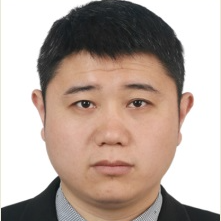Urban Resilience with Remote Sensing - Observation, Measurement, Evaluation and Applications
A special issue of Remote Sensing (ISSN 2072-4292). This special issue belongs to the section "Urban Remote Sensing".
Deadline for manuscript submissions: closed (31 August 2023) | Viewed by 30103
Special Issue Editors
Interests: urban remote sensing; digital image analysis; big remote sensing data analysis; nightlight remote sensing
Special Issues, Collections and Topics in MDPI journals
Interests: coastal ecosystems and sustainability; coastal remote sensing; land use/land cover change; multi-sensor data fusion
Special Issues, Collections and Topics in MDPI journals
Interests: urban remote sensing; nightlight remote sensing; remote sensing image analysis; GIS; spatial analysis
Special Issues, Collections and Topics in MDPI journals
Interests: urban remote sensing; urban sustainability; big earth data process and analysis
Special Issues, Collections and Topics in MDPI journals
Special Issue Information
Dear Colleagues,
In recent decades, the world has also witnessed rapid urbanization, with an increasing urban population that is projected to rise to 80% by 2050. The high density of urban areas makes them especially vulnerable to both the impacts of acute disasters and the effects of the changing climate. It is thus critical that we address sustainability challenges facing cities by taking steps such as poverty reduction, disaster reduction and prevention, and climate change mitigation, environmental sustainability maintenance, and social inclusion measures. These efforts towards urban resilience not only help individuals, communities, and business cope with multiple stresses, but also allow for the exploitation of opportunities for transformational development, and are the main focus of many global agencies, such as the World Bank, UN, and GEO.
The urban resilience framework is multidimensional in nature, consisting of four core dimensions: leadership and strategy, health and well-being, economy and society, and infrastructure and environment. Remote sensing has been applied to monitor urban infrastructure and environments in various ways. With recent advances in remote sensing in terms of spatial, temporal, and spectral resolutions and data processing algorithms, remote sensing is expected to provide important observations and tools for monitoring, evaluating, and modeling urban resilience. To help global cities persevere through future challenges, while positively adapting and moving towards sustainability, this Special Issue calls for original research papers covering topics including, but not limited to:
- Urban spatial structure and development;
- Urban green space;
- Implementation of new technologies toward resilient cities;
- Urban transportation systems and development;
- Urban infrastructure and building health monitoring;
- Climate impacts on urban areas;
- Urban flooding: prediction, monitoring, and mitigation;
- Remote observations for resilient cities;
- Urban heat island;
- Urban carbon emissions;
- Remote-sensing-based urban resilient index;
- Urban resilience evaluation and modeling with remote sensing data as well as other data;
- Case studies;
- Dedicated hardware and software solutions.
Prof. Dr. Qingling Zhang
Dr. Hongsheng Zhang
Prof. Dr. Noam Levin
Dr. Zhongchang Sun
Guest Editors
Manuscript Submission Information
Manuscripts should be submitted online at www.mdpi.com by registering and logging in to this website. Once you are registered, click here to go to the submission form. Manuscripts can be submitted until the deadline. All submissions that pass pre-check are peer-reviewed. Accepted papers will be published continuously in the journal (as soon as accepted) and will be listed together on the special issue website. Research articles, review articles as well as short communications are invited. For planned papers, a title and short abstract (about 100 words) can be sent to the Editorial Office for announcement on this website.
Submitted manuscripts should not have been published previously, nor be under consideration for publication elsewhere (except conference proceedings papers). All manuscripts are thoroughly refereed through a single-blind peer-review process. A guide for authors and other relevant information for submission of manuscripts is available on the Instructions for Authors page. Remote Sensing is an international peer-reviewed open access semimonthly journal published by MDPI.
Please visit the Instructions for Authors page before submitting a manuscript. The Article Processing Charge (APC) for publication in this open access journal is 2700 CHF (Swiss Francs). Submitted papers should be well formatted and use good English. Authors may use MDPI's English editing service prior to publication or during author revisions.
Keywords
- urban resilience
- global change
- change detection
- multisource data fusion
- signal processing and data mining
- artificial intelligence
- urban science
- sustainability
- resilient cities








